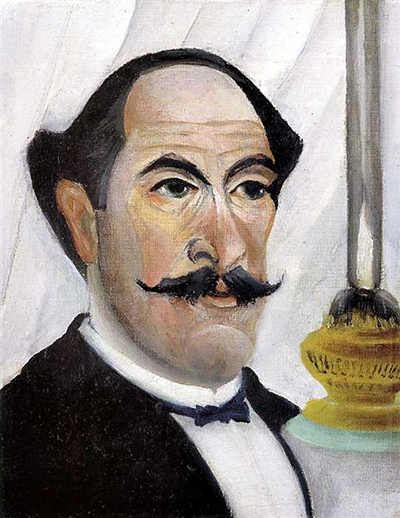This painting was one of many self portraits created by Henri Rousseau during his career. The full title of this artwork from 1903 was Self-portrait of the Artist with a Lamp.
This artwork can now be found at the Musée Picasso in Paris and there was some crossover between these two artists, stylistically. Rousseau worked as a Primitive or Naive artist, where as Picasso worked for a number of years under the influence of african art movements. Self-portrait of the Artist with a Lamp does not have as much information available on it compared to some of his career highlights, but we can still learn a lot by comparing it with other artworks from his career.
Rousseau produced this piece on a very small canvas, meaning he was forced to focus intently on a closeup of his own image, capturing a shoulder length portrait of himself in a black tie suit. There is also a lamp to his left which helps to add some perspective to the scene and frame the right hand side of the painting. In the background is a plain white curtain which avoids distracting one's eye from the main focus of the scene.
The artist portrays himself in a positive light, looking handsome and well dressed. This suggests an inner confidence at this time. Many artists have given less than complementary depictions of themselves, reflecting a very different mindset. In terms of Rousseau, his other self portrait in 1890 would become far more well known. In that scene he is full length, with several painting instruments included.




